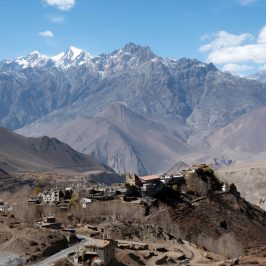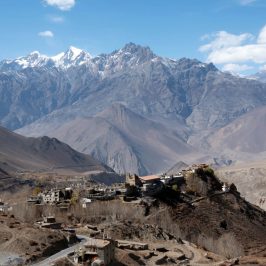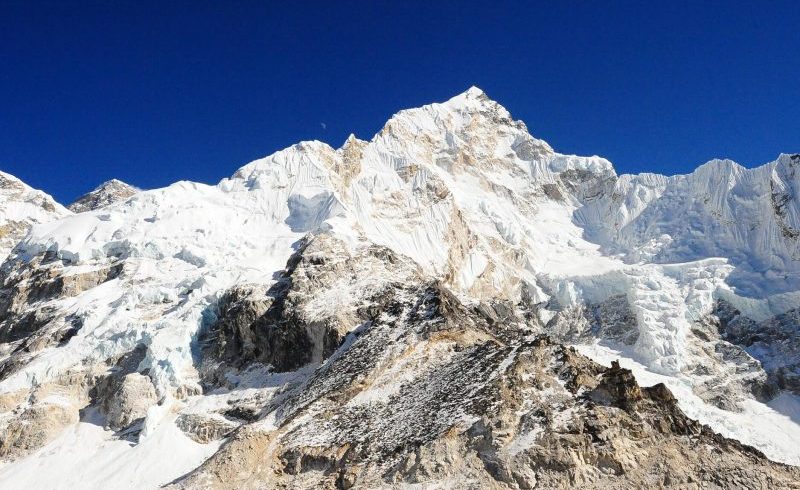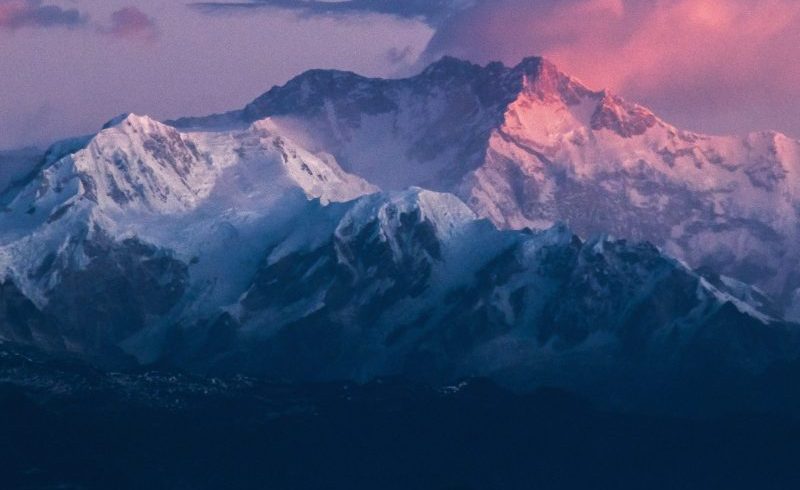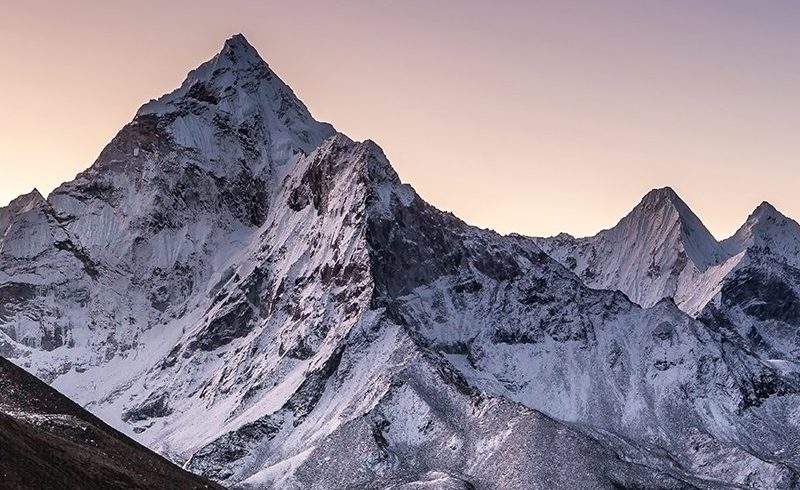Upper Mustang trek offers a very unique trekking experience in the remote trans-Himalayan part of the country. An arid river valley situated near the Annapurna Circuit in the rain shadow region of the Himalayas. Upper Mustang was open for tourists since 1992 making it one of the most preserved regions in the country.
The Upper Mustang Trek starts with a detailed tour of Kathmandu valley and a short tour of Pokhara. From Pokhara, a victorious flight takes you to the ancient city of Jomsom. Jomsom is the starting point of the trek. From here traversing across the high alpine ground crossing several passes and villages reach the Forbidden Kingdom of Lo Manthang. Explore the wonders around Lo Manthang and visit various Gompas of the region. Also learn about the primitive lifestyle, culture, and traditions of the locals. After exploring Lo Manthang head back to Jomsom and eventually to Pokhara. From Pokhara head back to Kathmandu marking the end of the trek.
The Upper Mustang trek is a wonder in itself taking you to the secluded part of the country where little has changed. Be a part of this thrilling and breathtaking trek with the Female Guide Kathmandu.
Travel Insurance:
All clients participating in any activity must have travel insurance. Personal injury, death, hospital expenditures, repatriation fees, helicopter rescue, and any other disease covered by the insurance plan will be given, we highly advise you to acquire a comprehensive insurance plan from a trustworthy insurance company.
Passport and Visa:
Every client must have a valid passport from the return date with a 6 months prior validity by the Nepalese consulate in your country or the immigration office at Tribhuvan International Airport in Kathmandu.
Equipment lists:
- Find the guidelines regarding essential trekking gear.
- Daypack above 40 liters. (Must be waterproof)
- Down jacket (rental available)
- Warm sleeping bag (rental available)
- Sun head, gulf cap, sunglasses, headlamp, and torchlight.
- Ear-muffs, sun Lotions/sun cream.
- One pair of liner gloves is thin wool and synthetic.
- Cotton t-shirts, Synthetic t-shirt.
- Two Long sleeve polyester or synthetic lightweight for sunny days.
- One Soft-shell jacket water & wind resist.
- One swimming dress.
- Inner clothes as your requirement.
- Liner socks, woolen socks.
- Proper trekking shoes.
- Imodium or Pepto Bismo capsules for upset stomach or diarrhea.
- Diamox for altitude sickness. The guide will help you to take it.
- One small personal-sized first-aid kit with blister treatments such as moleskin, bands, anti-infection ointments, muscle relief ointments.
Restrictions in Upper Mustang Trek
Permit Requirements:
To trek in Upper Mustang, trekkers must obtain a special Restricted Area Permit (RAP). This permit is necessary due to the region’s sensitive cultural and environmental status. It must be arranged in advance through a registered trekking agency in Nepal. The application process typically involves submitting personal details and an itinerary. Without this permit, entry into Upper Mustang is not allowed.
Guide Requirement:
All trekkers are required to be accompanied by a licensed guide. This regulation is in place to ensure the safety of visitors and to promote responsible tourism. Guides help navigate the terrain, provide insights into local culture, and assist in case of emergencies. Independent trekking is not permitted, so it’s essential to book a trek through a reputable agency.
Group Size:
Trekking in Upper Mustang generally requires a minimum of two people in a group. This policy is aimed at enhancing safety and fostering camaraderie among trekkers. However, exceptions can be made in certain cases, but it’s crucial to check with your trekking agency about the latest regulations regarding solo trekking.
Travel Insurance:
Comprehensive travel insurance is mandatory for anyone undertaking the trek. The insurance must cover high-altitude trekking and emergency evacuation, given the remote nature of the region. In the event of altitude sickness or injury, having reliable insurance is essential for ensuring safe transport to medical facilities.
Photography Restrictions:
While Upper Mustang boasts breathtaking landscapes and unique cultural heritage, there are certain restrictions on photography. In particular, some monasteries and religious sites may have prohibitions against photography. It’s respectful to ask for permission before taking photos, especially of people or sacred places, to honor local customs.
Environmental Conservation:
Upper Mustang is known for its fragile ecosystem and rich cultural history. Visitors are expected to adhere to Leave No Trace principles, which emphasize minimizing environmental impact. This includes carrying out all trash, avoiding littering, and respecting wildlife habitats. Being conscious of one’s footprint is crucial in preserving this unique landscape for future generations.
Cultural Sensitivity:
The region is home to a rich cultural tapestry, influenced by Tibetan Buddhism. Trekkers should respect local customs, especially when visiting religious sites or participating in local festivals. Dressing modestly and behaving respectfully is important, as locals are sensitive to foreign behavior that may be perceived as disrespectful.
Altitude Limitations:
The Upper Mustang trek involves significant altitude gains, which can pose risks for altitude sickness. Trekkers should follow proper acclimatization protocols, including ascending slowly and recognizing symptoms of altitude-related illnesses. It’s advisable to take rest days as needed and stay hydrated to mitigate these risks.
Prohibited Items:
Certain items are strictly prohibited in Upper Mustang, including drugs and materials that may offend local customs. Trekkers should be mindful of what they bring into the region and avoid carrying items that could cause cultural or legal issues.
Restricted Access to Some Areas:
Some sections of Upper Mustang may have additional restrictions or may be closed to trekkers for reasons related to environmental conservation or cultural preservation. These regulations can change based on local government policies or ongoing conservation efforts, so it’s essential to stay informed through your trekking agency.
Best Time to Visit Upper Mustang
The ideal times to visit Upper Mustang are during the spring and autumn seasons, specifically from March to May and September to November.
Spring (March to May): This period is characterized by mild temperatures and blooming wildflowers, making the landscapes even more picturesque. The days are generally warm, perfect for trekking, while nights can be chilly, especially at higher altitudes. The clear skies during this season offer stunning views of the surrounding mountains.
Autumn (September to November): Autumn is another excellent time to trek in Upper Mustang. After the monsoon season, the trails are less muddy, and the air is crisp. The visibility is usually at its best, providing breathtaking panoramic views of the Himalayas. Additionally, this season coincides with several local festivals, allowing trekkers to experience the vibrant culture of the region.
Winter (December to February): Winter can be harsh in Upper Mustang, with extremely cold temperatures and potential snowfall, making trekking challenging and sometimes unsafe. Most tea houses may close during this season, limiting accommodation options.
Monsoon (June to August): The monsoon season brings heavy rains to many parts of Nepal, though Upper Mustang has a rain shadow, making it less affected. However, the trails can still be muddy and slippery, and some areas may be difficult to navigate.
Overall, for the best trekking experience, plan your visit during the spring or autumn months to enjoy pleasant weather, beautiful scenery, and cultural experiences.
Accommodation on the Upper Mustang Trek
During the Upper Mustang trek, accommodation primarily consists of traditional tea houses and guesthouses, which offer basic yet comfortable lodging. Most trekking routes are lined with tea houses that provide warm beds, shared bathrooms, and communal dining areas, creating opportunities for cultural exchange with local families and fellow trekkers. Rooms are generally simple, featuring twin beds with provided mattresses and bedding, though private rooms may be available in some places. It’s advisable to carry a sleeping bag for added warmth, especially during colder months or in more remote areas. Facilities can vary widely; some tea houses offer hot showers and electricity, while others may have limited amenities, so bringing your own toiletries is recommended. The meals typically include traditional Nepali dishes like dal bhat, along with some Western options, and dietary preferences can often be accommodated with prior notice. Staying in tea houses allows for an authentic experience, as many owners are eager to share stories about the region and its culture. However, in the more remote sections of Upper Mustang, tea houses can be fewer and further between, making careful itinerary planning essential. For those who prefer, camping is also an option in areas lacking tea houses, with trekking agencies usually arranging for tents, sleeping gear, and meals. Overall, the accommodation experience contributes significantly to the unique charm of trekking in Upper Mustang.
Entry and Permit Requirements for Upper Mustang Trek
To trek in Upper Mustang, you must comply with specific entry and permit requirements due to the region’s restricted status. Here’s what you need to know:
Restricted Area Permit (RAP):
A special Restricted Area Permit is mandatory for all trekkers wishing to enter Upper Mustang. This permit helps protect the unique cultural and environmental heritage of the region. It can only be obtained through a registered trekking agency in Nepal and typically requires submitting personal information and an itinerary.
Trekking Guide Requirement:
Trekkers are required to be accompanied by a licensed guide. Independent trekking is not permitted, ensuring that all visitors have the support and guidance necessary for a safe experience. The guide will also help navigate the terrain and facilitate cultural interactions.
Group Size Regulations:
The trek usually requires a minimum group size of two people. Solo trekking is generally not allowed, although exceptions may be made under certain circumstances. It’s important to confirm the latest group size regulations with your trekking agency.
Travel Insurance:
Comprehensive travel insurance that covers high-altitude trekking and emergency evacuation is essential. This is particularly important due to the remote nature of Upper Mustang and the potential for altitude-related health issues.
Visa Requirements:
All trekkers must have a valid visa to enter Nepal. A tourist visa can be obtained on arrival at Tribhuvan International Airport or through a Nepalese consulate prior to travel. Ensure that your visa covers the duration of your stay.
Permits for Specific Areas:
In addition to the RAP, you may need additional permits if your trek includes areas beyond Upper Mustang, such as the Annapurna Conservation Area. Confirm with your trekking agency to ensure you have all the necessary documentation.
Permit Fees:
There are fees associated with obtaining the RAP, which can vary based on the duration of your stay in Upper Mustang. Be sure to check the latest fees when planning your trek.
Meals and Drinking Water on the Upper Mustang Trek
Meals:
During the Upper Mustang trek, meals are primarily provided at tea houses along the route. Most tea houses serve a variety of dishes, including traditional Nepali fare such as dal bhat (lentil soup with rice), curries, and local vegetables. You can also find Western options like pasta, sandwiches, and soups. Breakfast typically includes items like eggs, toast, and tea or coffee. It’s advisable to communicate any dietary preferences or restrictions to your trekking agency in advance, as many tea houses can accommodate vegetarian or vegan diets.
Dining Experience:
Dining in tea houses often involves communal meals, allowing trekkers to socialize and share experiences. The food is usually made from locally sourced ingredients, providing a taste of the region’s flavors and culture.
Drinking Water:
Staying hydrated is crucial during the trek. While some tea houses offer boiled or purified drinking water for purchase, it’s recommended to carry water purification tablets or a portable water filter to ensure safe drinking water throughout your journey. This practice helps avoid gastrointestinal issues that can arise from contaminated water sources.
Cost of Water:
Bottled water is available at higher prices in tea houses, especially in remote areas, so it’s best to plan accordingly. Bringing a reusable water bottle can minimize plastic waste and reduce costs throughout the trek.
By being mindful of meal choices and drinking water safety, you can enjoy a nourishing and healthy trekking experience in Upper Mustang.
Environment in Upper Mustang
Upper Mustang is renowned for its stark, breathtaking landscapes and unique ecosystem, characterized by dramatic desert-like terrain interspersed with ancient Tibetan culture. The region is surrounded by the towering peaks of the Himalayas, offering stunning views and a diverse range of geological formations, including eroded cliffs and wind-sculpted rock faces. The climate is arid, with minimal rainfall, leading to a fragile environment that supports hardy vegetation and wildlife adapted to the harsh conditions. Conservation efforts are crucial here, as the delicate balance of this ecosystem is threatened by climate change and increasing tourist activity. Visitors are encouraged to practice responsible tourism by adhering to Leave No Trace principles, respecting local customs, and minimizing their environmental impact to help preserve the natural beauty and cultural heritage of this remarkable region.

